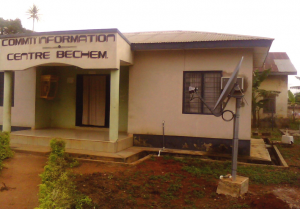An initiative to connect Haiti with the rest of the world via Internet connectivity, two years after the devastating earthquake has been launched. The project which involves a construction of a US$16m 200km undersea cable is being undertaken by Digicel Group with technology and expertise from Alcatel-Lucent and Columbus Networks.
Communication in Haiti after the Earthquake
Much of Haiti’s communications network, including the country’s only subsea cable were destroyed or damaged by the January 2010 earthquake which, to date, have not been fully restored. As a result, the Haitian population and the Haitian economy have suffered from the lack of high-capacity broadband connectivity that is pivotal to business, public sector and social activity.
Digicel Group in Haiti
Digicel Group, a mobile network operator in the Caribbean, Central America and Pacific, was launched in Haiti in 2005 with the commitment to best value, network and service. According to the Digicel Group Director of International Business, Conor Clarke, “For more than two years now, Haiti’s recovery has been hindered by the lack of high-capacity broadband connections with the rest of the world. With the delivery of this critical undersea cable, the people of Haiti will see a truly dramatic improvement in the range and quality of communications services available.”
Digicel’s undersea cable project is the latest in its ongoing recovery and rebuilding efforts in Haiti. As the single largest private investor in Haiti, Digicel has invested over U$600 million to date and employs over 900 people directly and more than 60,000 people indirectly. Once completed, the FibraLink Extension to Haiti will provide a secure, high-capacity subsea link with 21 other countries in the Caribbean region, as well as with the United States and the main Internet backbone gateway located in South Florida.
This comes at the time when Digicel Group, has acquired a Haitian mobile operator, Voilà, from its parent company, US-based Trilogy International Partners, for an undisclosed sum. Commenting on the acquisition, Colm Delves, Digicel Group CEO, said “Digicel’s acquisition of Voilà will see mobile users across Haiti benefiting from increased investment in even better mobile services and new technology in the future.”
Columbus Networks
Paul Scott, President of Columbus Networks the undersea fiber-optic cable network provider in the Pan Caribbean Americas region said; “We are committed to fostering the development and continuous improvement of the communication infrastructure throughout the region where broadband adoption rates are continuing to grow rapidly. This expansion will enable us to enhance broadband connectivity further and thus deliver reliable bandwidth services at cost-effective prices to a very large population base.”
Alcatel-Lucent Submarine Networks
On the part of Alcatel-Lucent Submarine Networks, Philippe Dumont, the President said; “We are proud to be part of this initiative as one of the variety of other outreach programs to support Haiti’s recovery. The benefits that this undersea link can bring to Haiti can’t be over-estimated. We are pleased to collaborate with Digicel and Columbus Networks on such a critical endeavor.” Alcatel-Lucent originally deployed the FibraLink system which provides coastal and terrestrial connectivity from Kingston to Ocho Rios and Montego Bay in Jamaica with direct connectivity to the US by integrating into other part of the Columbus Networks infrastructure.
Visit here for more information on the initiative and the Digicel Group.

















































